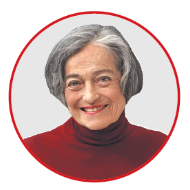
Chicago, United States, 1928
EDUCATION:
1948-1950: New York University, BA in art history
1964-1966: Institute of Design at Illinois Institute of Technology
CAREER:
1964: New Trier High School in Winnetka, Illinois
1967: School of the Art Institute of Chicago
1969-1983: Visiting professor at numerous colleges, including the Institute of Design at the Illinois Institute of Technology, the School of the Museum of Fine Arts of Boston, University of the Arts in Philadelphia, Bezalel Academy of Art and Design in Jerusalem, Cornell University
1995: Professor emerita of photography, School of the Art Institute of Chicago
WORK:
Crane's photography has featured in over 90 solo exhibitions since 1965, and seven retrospective exhibitions have been mounted to date. The most recent, Barbara Crane: Challenging Vision, opened at the Chicago Cultural Center in October 2009 before traveling to the Amon Carter Museum of American Art in Texas and the Griffin Museum of Photography in Massachusetts.
EXHIBITIONS:
George Eastman House/International Museum of Photography, Rochester, New York
Art Institute of Chicago
Museum of Contemporary Photography, Chicago
Museum of Contemporary Art, Chicago
Museum of Modern Art, New York
Library of Congress, Washington
Center for Creative Photography, Tucson, Arizona
Bibliotheque Nationale and FNDC, Paris
Thessaloniki Museum of Photography, Greece
WestLicht Museum of Photography, Vienna
HONORS AND AWARDS:
1974: National Endowment for the Arts grant
1979: John Simon Guggenheim Memorial Fellowship in Photography
1988: National Endowment for the Arts grant
2001: Illinois Arts Council Artists Fellowship Award in Photography
2006: Honored as a distinguished artist by the Union League Club of Chicago and Brown University
2009: First recipient of the Ruth Horwich Award to a Famous Chicago Artist, conferred by the City of Chicago Department of Cultural Affairs
2013: Honored by the Hyde Park Art Center in Chicago
2015: Silver Camera Award from the Museum of Contemporary Photography at Columbia College, Chicago
2016: Professional Achievement Award from the Illinois Institute of Technology
The US photographer who captured changing China

"Firstly, I thought the photographs I took in China weren't typical of my work at the time. Also, a Chinese friend who I respect originally saw the photographs and said 'The Chinese people don't want to be remembered for how poor they were.' So, out of respect, I put the photographs away for many years," she said.
But the idea of publishing the photographs has obsessed her for years.
"Barbara hopes someone will help her publish that book, so the world will see the seminal images she made in China," Shen added.
Born in 1928 in Chicago, Crane was exposed to photography through her father, who was not a professional but was passionate about the medium. As a child, Crane helped him in his basement darkroom.
Crane earned her bachelor's degree in art history at New York University, and in the 1960s, she received a master's degree from the Institute of Design at the Illinois Institute of Technology.
After starting a photography program at New Trier High School, Crane went on to teach photography for 28 years at the School of the Art Institute of Chicago. For most of her life, she worked as a photographer, creating highly formal, often abstract images of people and urban landscapes.
She is the recipient of a John Simon Guggenheim Memorial Fellowship in Photography grant, two National Endowment for the Arts grants and an Illinois Arts Council Fellowship Award in photography.
Crane has participated in over 170 group exhibitions and featured in more than 75 solo exhibitions. Her work is included in numerous permanent collections, including the Museum of Modern Art in New York and the Art Institute of Chicago.
"Barbara is an icon, she is one of the classics," said Susan Anderson, an internationally recognized artist who studied with Crane in the 1980s at the School of the Art Institute of Chicago. "I think she was way ahead of her time. Her works still look very contemporary."
Yu Peng, China's deputy consul general in Chicago, attended Crane's recent exhibition and said her work in China is a "precious treasure" that represents the cultural exchange between China and the US and the friendship between people of the two countries.
"She is a legend. As the first American photographer to travel in China freely after reform and opening-up, her artwork has important significance in helping to understand the country's social situation in that historical period," Yu said.
"Hopefully, through our efforts, we can promote the publication of the photo in China, even worldwide, in memory of the cultural exchange through photography between China and the US."
In 2009, Crane got to visit China again. "China's development is unbelievable," she said. "It's wonderful."
With good health, Crane dreams of going back to China to exhibit her work or sign what she hopes will be her new book celebrating the China of 1985.


